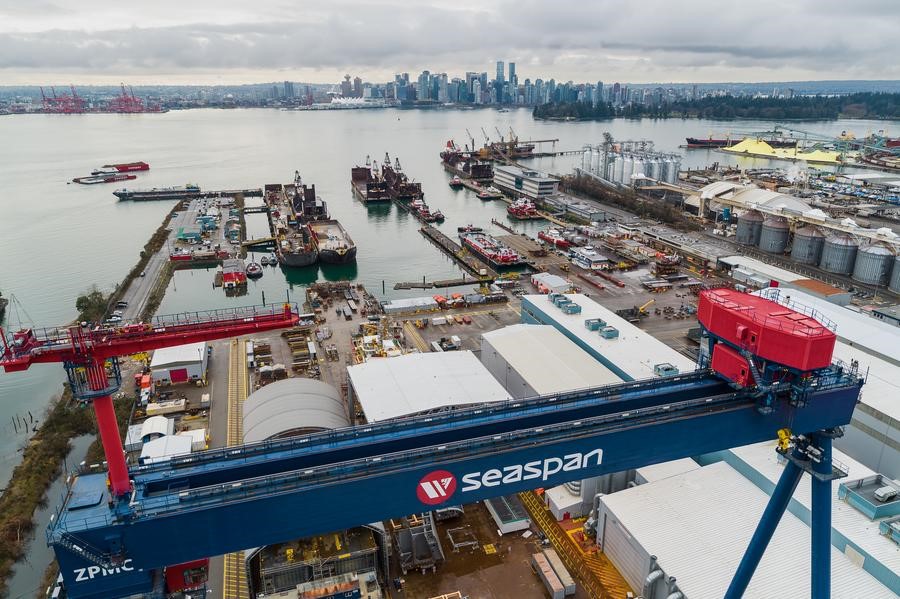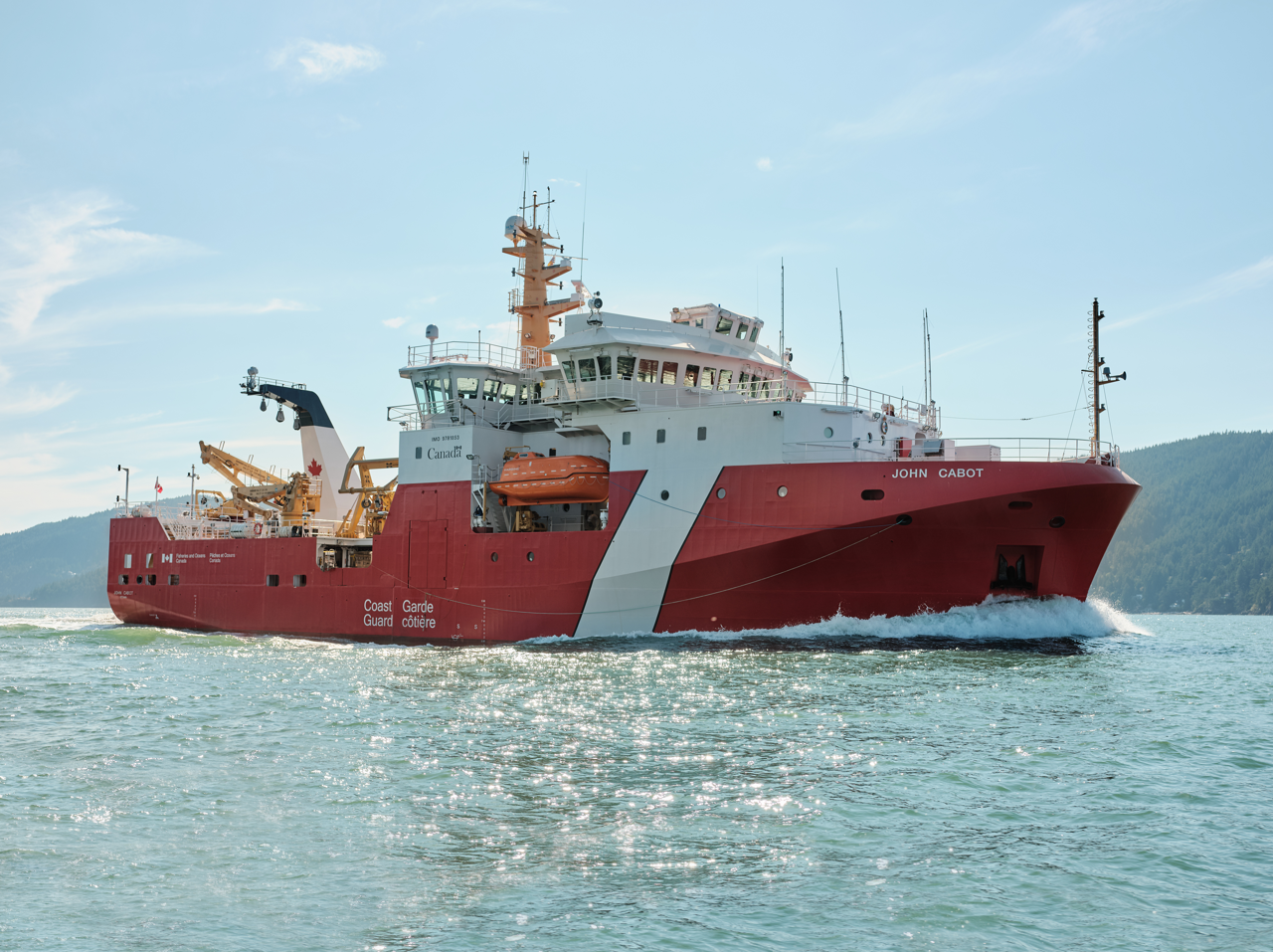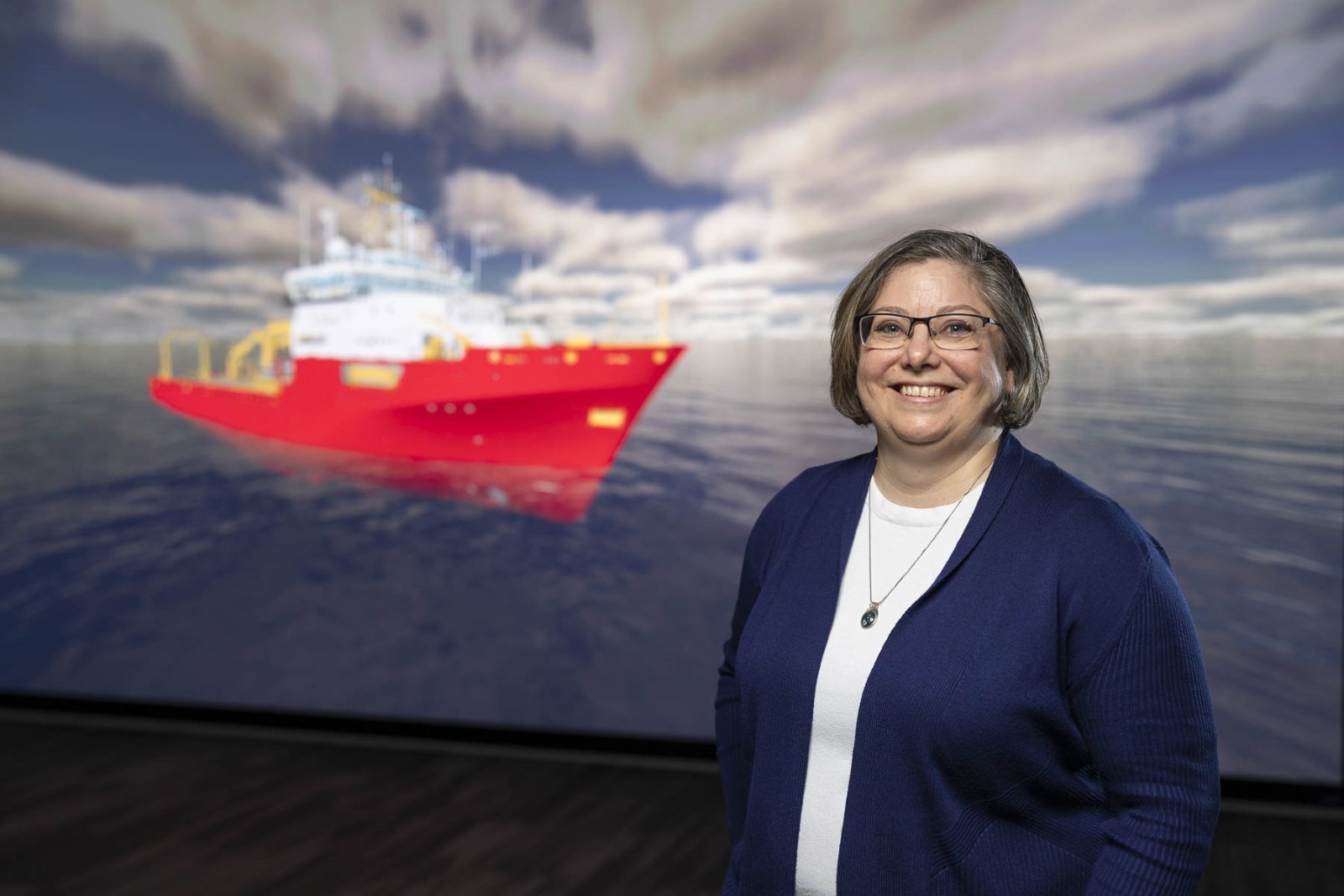
Seaspan Shipyards installed its HoloShip system at its Headquarters in North Vancouver, British Columbia, Canada, utilising industry-leading VR software and hardware. The system incorporates Virtalis Visionary Render software along with an ActiveWall, ActiveMove, and headset station. Seaspan uses this powerful immersive visualisation facility across a range of use cases:
Since the installation, Seaspan has hosted over 1185 participants with the system, over 140 different events, including customers such as the Royal Canadian Navy, the Canadian Coast Guard and federal and provincial leaders in the shipbuilding industry.
The HoloShip is being used in the design process for an oceanographic vessel as well as other federal ships as part of a fleet renewal program.
Based in Canada on the Pacific Northwest Coast, Seaspan Shipyards’ operations include its Vancouver Shipyards, Vancouver Drydock, and Victoria Shipyards. For over a century, Seaspan has built, repaired and maintained vessels for domestic and international customers, including the Canadian Government. It is now the largest shipbuilding and repair company in the area and one of the most modern new construction shipyards in North America.
Seaspan is Canada’s long-term strategic shipbuilding partner for the Canadian Coast Guard and Royal Canadian Navy under the National Shipbuilding Strategy (NSS). The NSS is a nation-building effort to create a sustainable Canadian shipbuilding industry, secure long-term job opportunities and build the next generation of ships for the Canadian Coast Guard and Royal Canadian Navy. As such, Seaspan is leading the redevelopment of Canada’s domestic shipbuilding industry on the West Coast.
The scale and complexity of the ships drive Seaspan to continuously explore efficiencies in design, build, and delivery of modern vessels, with a view that they are ready and able to operate for many, many years.

Under the NSS industry renewal effort, Seaspan was keen to innovate its process and, working across Canada's marine and digital ecosystems, find efficient ways of designing and delivering ship builds. It began at the beginning – with the CAD model of the ship, which is a primary data asset for the shipyard. The model evolves through each stage of design, into construction, and represents the cumulative effort of thousands of hours of work and is used by hundreds of people.
It’s no surprise that these CAD drawings and then 3D models tend to be enormous and complex, considering the size of the ship builds in question. Over their career, designers and engineers learn to interpret 2D or 'flat' CAD drawings into how that will feel as a physical space. But many of the other people that need to work with the design are not as experienced or well-trained in understanding these models, leading to costs in time and money as design processes takes a long time.
For Seaspan to drive efficiency, it had to expand the use and effectiveness of these models, making it easier for anyone to experience and collaborate with the data. One way of making this kind of data more understandable would be translating it into a fully immersive 3D model.
It is generally accepted that the shipbuilding industry has been somewhat slower to adopt the latest digital technologies such as virtual reality. Therefore, Seaspan looked outside to the aerospace and manufacturing industries, which have long seen plenty of success using VR and immersive technology.
In the search for a solution, Seaspan took a careful, methodical approach. It began by laying out use cases that VR could support, the benefits that could be achieved, how often a visualisation facility might be used for the use case, and the intended audience. For example, some of these use cases included:
Seaspan also built out criteria around what the solution should offer. It would need to be easy-to-use and flexible enough to cover the above use cases, plus any others that arose. It would need to import CAD data and handle huge amounts of it so that engineers could work with the whole model, or a section of it, depending on the work being done, and offer flexibility for development of current and future visualization and user scenarios.
After investigating what was available on the market, Seaspan selected Virtalis to put together the solution, consisting of industry-leading software and hardware:
The key to this solution was flexibility. The ActiveWall offers a way for groups of people to easily collaborate, see the same content, point out areas of interest and identify items which require resolution. As the group can be immersed in the model without headsets, they can better hold face-to-face conversations and gauge reactions. Utilising this method to view the model is also useful to accommodate anyone not comfortable with wearing a headset.
The headset is still available for when someone needs to be fully immersed in the model and to take a detailed, closer look at it, and to get as close as possible to experiencing the ship for real.
Visionary Render proved to be the ideal software solution too. It is compatible with a huge range of file types, from point clouds to CAD, product lifecycle (PLM) data to building information management (BIM) data, and many more.
It is specifically designed to handle enormous data sets, rendering them in minutes and hours rather than the days other programs may take. Engineers can review the whole ship model at once. Or, depending on their needs, get down to the nitty gritty of a specific area. Either way, rendering can take as little as five minutes depending on the size of the model.

Since its installation, the HoloShip system has seen plenty of use from different stakeholder groups both inside and outside of Seaspan. A number of common themes have arisen in terms of how engineers and designers use the facility:
Human factors and ergonomics are a key factor in any design and, increasingly, virtual reality and immersive technology are being used to validate decisions here.
For example, regulations may state that a corridor must be 80 centimetres wide. Without the virtual model, this corridor can only be walked for the first time four or five years after the initial design. But with the virtual model, designers can step through the corridor much earlier in the process and determine how comfortable that width really is. This can be done with other factors, such as being able to reach easily for a lever, or to check potential obstacles in the way of a pump that may need servicing in the future.
By rectifying any issues or making tweaks in the virtual model, costly mistakes can be avoided years ahead of the actual production taking place.
The virtual model helps engineers confirm that the designs are compliant with regulations around line of sight, which traditionally is done with just the design measurements or a physical mock-up. Indeed, one organisation had asked Seaspan to use some of its shipyard space to build a plywood mock-up, intending to evaluate the bridge and wheelhouse arrangements with its engineers and customers, as was the industry standard.
Seaspan suggested an approach which included trying out the HoloShip system as well. This proved to be a quicker solution than building a plywood replica. It also meant that it was easier to view the true lines of sight, since the plywood mock-up only had the arrangements of the console – with the mock-up, participants had to be more imaginative about the lines of sight.
With the virtual model, the whole model could be used around the lines of sight being inspected, so users could ‘look’ out of the windows and get a real experience of the full lines of sight. The organisation had a trial run before bringing in its customer to view the model, with both parties subsequently extremely impressed.
The HoloShip can take a holistic view of the full ship design, as well as zoom in on the details, thanks to the Visionary Render software that is powering the system. This enables designers, engineers, and future crew for the ship to view the setups for areas like the bridge, deck, engine room, crew accommodations, galleys and so on, walking through virtually as they will for real in a few years’ time. The design is validated along every step of the process.
The Seaspan team has also noted that these virtual check-ins are an excellent way to keep up stakeholder engagement throughout the many layers of complexity in the design and build process. This is especially the case for the end users of the ship – the entire build can take more than five years from the initial designs, so getting a virtual look of the final product can make it feel much more real.
Visitors to Seaspan’s HoloShip have ranged from senior stakeholders at the Canadian Coast Guard, to the Royal Canadian Navy, as well as federal and provincial leaders in the shipbuilding industry and those with a vested interest in innovation and technology.
These stakeholders have sponsored and invested in rebuilding Canada’s national shipbuilding industry. Interacting with the virtual model gives them a way to see the future of what their investment will bring and to again sustain their enthusiasm through years of what may seem like slow progress.
Furthermore, Seaspan sees the HoloShip as a way to drive savings in time and cost across the design process. Some players in the shipbuilding industry can compete on being cheaper in labour costs. But with the HoloShip technology, Seaspan can focus its own labour efforts where they will have the most impact.
“We know the phrase ‘a journey of a thousand miles begins with a single step’ and I would say HoloShip has been pretty incredible for a step on our own journey towards really changing how we’re thinking about and utilising digital assets.”
Jennifer Busler, Innovation Manager, Seaspan Shipyards
In a relatively short timeframe, Seaspan has reported numerous benefits seen from using its 3D model and data in the Visionary Render software, centred around better decision-making, better engagement and better processes.
By using the virtual model alongside immersive technology, teams can make higher-quality decisions, and do so more quickly. Everyone can get on the same page easily, since everyone has access to the same information and the same data, without needing to understand the ‘flat’ CAD drawings.
The virtual model offers a quick and easy way to conduct options analysis with the designers and engineers. Rather than needing to use any sort of physical mock-up, different configurations can be checked in the virtual model, in a way that lets stakeholders get in and understand the options. Certain design conversations can also happen earlier than usual in the process, as there is a virtual model to work with, rather than having to wait for physical components to exist.
The use of the 3D model has changed the understanding of and conversations around digital assets, which are now seen as a key deliverable in the procurement process. By working with partners throughout its supply chain, Seaspan is building capability for digital assets that are fuller and more detailed, which can be integrated into a fully-realised digital twin.
The marine industry is quickly evolving as it adopts and utilises digital solutions augmented and virtual reality. HoloShip provides a platform to engage and develop solutions within Canada's rich digital and marine businesses and communities.
Seaspan has found that the technology resonates very well with younger members of its workforce and wider community. The young (and young-at-heart) generation are comfortable stepping into and working in virtual environments. Some have even commented that where they had been unsure about the shipbuilding industry being right for them, the use of the latest innovative technology reassured them, and has proven to be a talent attraction and retention tool.
Seaspan is keen to keep exploring what the HoloShip has to offer its teams and external stakeholders, as well as investigate what other technologies can be integrated.
For example, the team is considering how mixed reality could be used, or how a spatio-temporal dashboard could bring multiple live datasets into one single source of truth.
Seaspan is also looking at how the 3D model can be used beyond the design and build stages, extending the value and benefits of the data as far as possible. The model could be used in training and handover, familiarising the shipowners with the final product ahead of launch.
The model could also fit into future stages such as remote operations, maintenance, and even decommissioning or second-life initiatives. When linked with live Internet of Things (IoT) data, the model could be used to keep engineers updated on potential maintenance issues. This would feed into predictive maintenance, rather than preventative or routine maintenance – repairing the items that need repairing, instead of fixing everything ‘just in case’.
Everyone at Virtalis is looking forward to working closely with Seaspan to deliver the maximum value possible from its digital assets.

“The Virtalis model represents the entire ship and provides an enhanced tool for visualisation across the whole product life cycle and pro-actively planning in-service support management.”
Dave Hargreaves, Sr. Vice President of Strategy and Business Development and Communications, Seaspan Shipyards